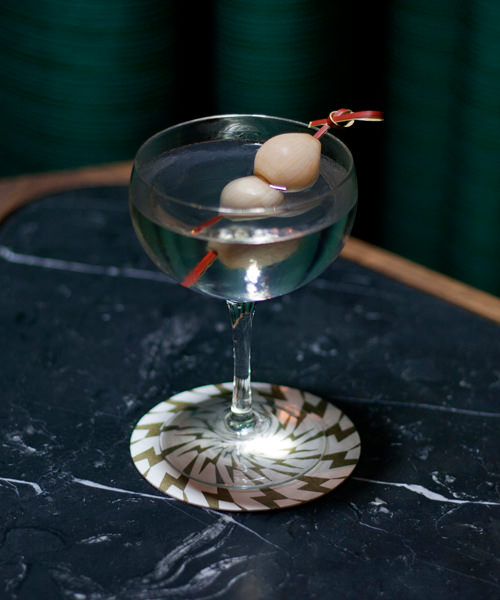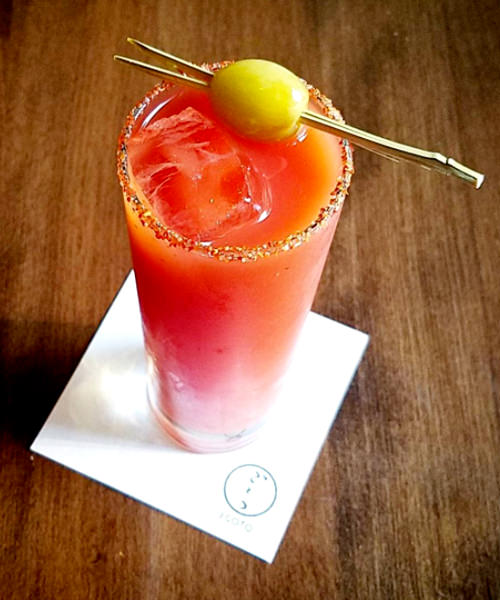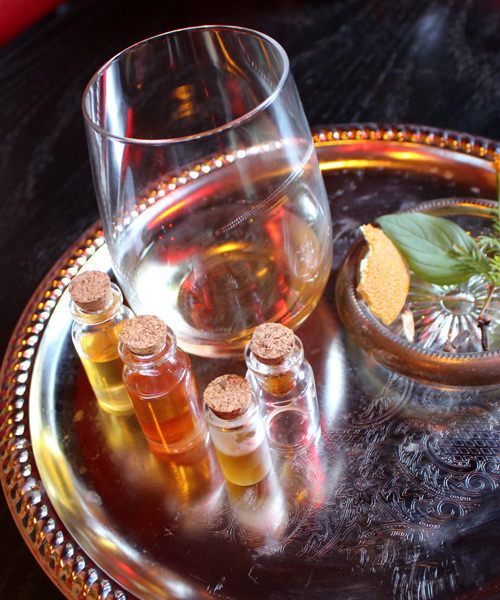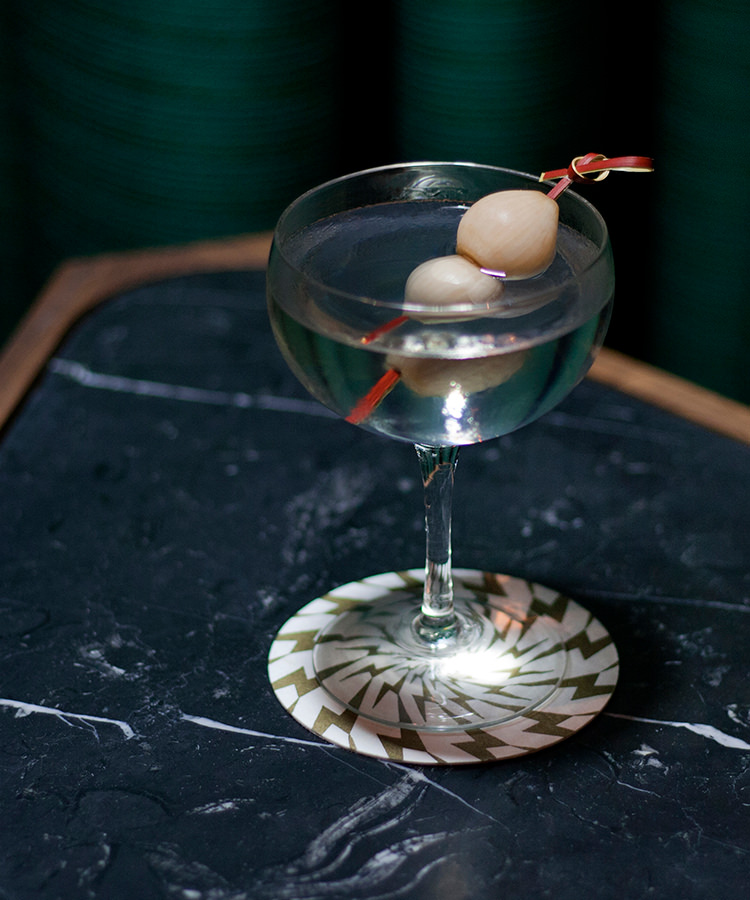We’re conditioned to understand the taste of sweet, sour, bitter, and salty foods from a young age. But comprehending umami — the Japanese term ascribed to savory deliciousness, found naturally in ingredients like miso and mushrooms – can be a bit more challenging.
Japanese chemist Kikunae Ikeda first identified the meaty flavor profile that we now call umami in 1908. Ikeda believed the umami flavor stemmed from glutamate, or glutamic acid – amino acids that naturally occur in many living things. Cooking, aging, or fermenting an ingredient – think dry-aged beef, miso, soy sauce — can boost its umami. Oh, and remember MSG? That’s man-made umami.

While umami-rich cuisine is nothing new, over the last few years, forward-thinking bartenders across the country have taken a tip from the kitchen, and begun to explore the X-factor in drinks.
“Umami is the sensation of savoriness, found in the best of what we eat and drink,” explains Eric Fox, assistant general manager and bar honcho at celebrated San Francisco Italian haunt Cotogna. But umami is not solely the domain of hearty, rich foods, says Fox. Similar flavors can be recast in other, less expected places. Like a cocktail, for example.
It’s only natural that umami would transition to beverages at many Japanese establishments. When Kenta Goto opened his intimate cocktail den Bar Goto in New York City two years ago, on his inaugural menu he served a riff on the Bloody Mary aptly named the Umami Mary, and the tomato tipple has remained a staple ever since.

“Utilizing ingredients that add umami allows us to modernize the classics, and to introduce more flavors that are not only sour or sweet,” explains Goto.
To achieve the umami flavor in the Umami Mary, Goto gave greater dimension to the classic vodka-tomato-juice-Worcestershire-sauce elixir by enriching the drink with a shiitake mushroom and dashi-infused vodka, then adding miso to a base of tomato, Clamato, and vodka.
At luxe Japanese omakase newbie Uchu, also in New York, barman Frank Cisneros – who spent a year living in Tokyo – mixes a shochu highball with an ume (the Japanese word for plum) sour into what he calls an Uchu-Hi. He adds sherry, barrel-aged shochu, mole bitters, umeshu (plum wine), soda, and umeboshi (pickled plum) to bring out that “je ne sais quoi” flavor, as he puts it.
“The drink starts tart and refreshing, but you’re given a Japanese-style drink muddler, and the more you muddle it, the more umami comes out, so the cocktail develops into a savory one, from a tart and bubbly one,” he concludes.

But Japanese establishments aren’t the only spots playing with your fifth taste. While Cotogna’s Fox just added a grappa-based tomato water cocktail that’s fat-washed with Parmesan, Chad Solomon, co-owner of Dallas’s experimental cocktail den Midnight Rambler, has offered two MSG-laced libations since the bar’s debut in 2014. The Pho-King Champ is a twist on the classic Bull Shot, inspired by Vietnamese pho, with beef stock, fish sauce, and MSG. The Silvertone is a gin Gibson twist, with pickled pearl onion, chipotle peppers, and MSG.
As the world of cocktails has matured over the last decade, it’s not surprising that those behind the bar continue to draw inspiration from cuisine. When building drinks, bartenders “certainly [take] more liberties now” than in the past, says Solomon.
“There has been a general increase in the influence of kitchens … on beverages,” says Annie Beebe-Tron, bar manager at Chicago’s The Ladies Room, the year-old Asian cocktail lounge from those behind Fat Rice.

Beebe-Tron believes that it was only a matter of time before umami hit booze. Since The Ladies’ Room’s inception, Beebe-Tron has been adding umami to potations via house-made tinctures of kombu, plus matsutake mushroom and artichoke. That extra flavor “gives balance and a deeper note to the cocktails,” Beebe-Tron explains.
Umami has always been more pronounced in food, as it can be overwhelming if used too much in a cocktail, Luis Hernandez, head bartender at Seamstress in New York, tells me. Nevertheless, come September, the globally-inspired bar will roll out a new menu based on the five tastes, a section of which will be dedicated to umami.
And Beebe-Tron agrees with Hernandez on the importance of beverage balance, whether the drink chases umami or not. Unlike with food, where the more umami the better, when it comes to cocktails, less is more. “Umami should generally be used sparingly, otherwise you could end up serving your guests a beefy spirituous broth that needs a second drink as a point of relief,” says Beebe-Tron. As with most things in life, it’s all about balance.
